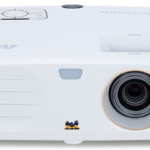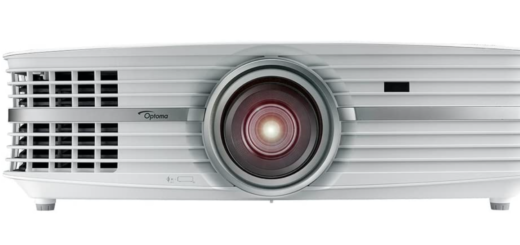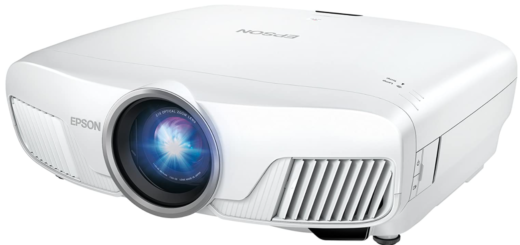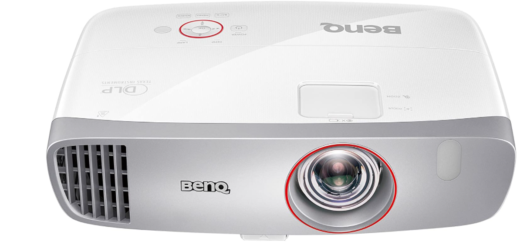ViewSonic PX747-4K Review (4K DLP Projector)
ViewSonic PX747-4K represents a chance for users to measure beyond 1080p and SDR without having to spend a lot of money. Due to some advanced technologies from Texas Instruments, it generates a picture that is just as sharp and clear as what you’d see from a native Ultra HD projector. To this, it provides a lot of brightness and compatibility using the ViewSonic PX747-4K HDR10 format located on UHD Blu-ray disks and in content that is streamed.
Design Of ViewSonic PX747-4K
While I’m acquainted with ViewSonic PX747-4K monitor screens, the PX747-4K is my first chance to review one of their pellets. They aren’t new to this current market, having successfully marketed a lineup of boardroom versions for the previous several decades. A glance at their site shows a massive version line, sporting a variety of settlements, and that range in cost from $500 around $3000. None make any overtures toward home theater usage but the newest Ultra HD models surely appear until the job.
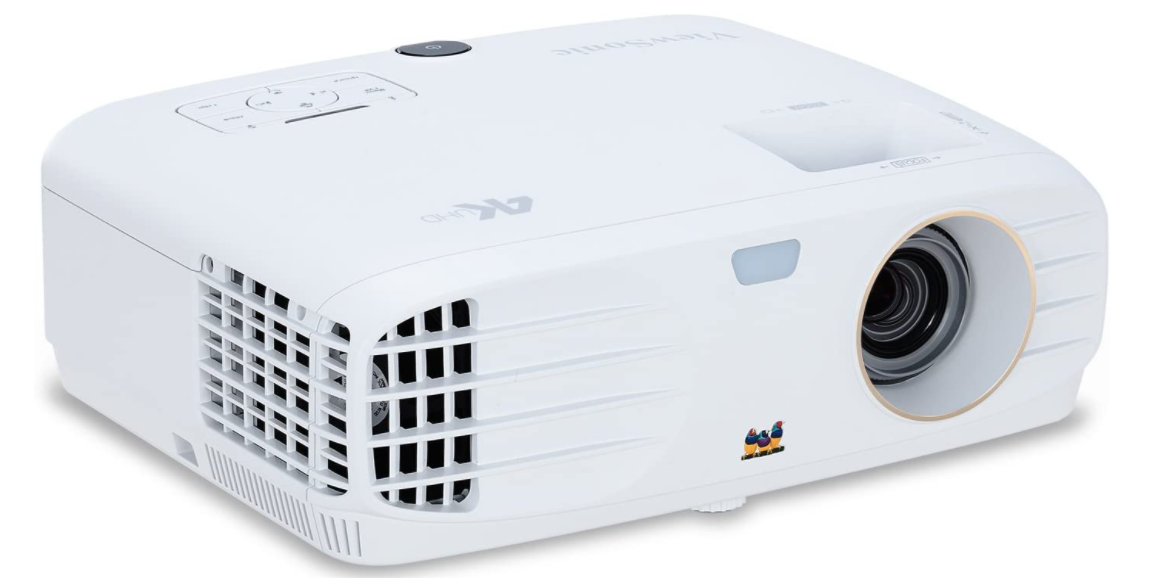
The ViewSonic PX747-4K projector is that the brighter of both Ultra HD PX versions, another being the 2200-lumen PX727-4K. They’re priced the exact same and are meant for two distinct environments. The ViewSonic PX747-4K projector works nicely with some room lighting and may project a nicely saturated picture in areas that are not entirely light-controlled. It does this using an RGBW color wheel. That additional white section pushes upward output at the cost of color brightness. The 727 has an RGBRGB wheel that enhances equilibrium but reduces the summit by approximately 30%.
There are loads of projectors at the price point, providing an assortment of attributes, and providing varying degrees of precision and versatility. Though this might seem like a boardroom screen, it’s all of the needed tools to become an exceptional home entertainment projector. Let us have a look.
Video Quality Of ViewSonic PX747-4K
In the last year or so, we have seen a brand new breed of DLP projectors according to a .47″ processor from Texas Instruments. The native resolution is 1920×1080 pixels however, it ViewSonic PX747-4K utilizes a quad-shift method to boost perceived resolution to an honest 3840×2160. You won’t find any screen door effect by a projector such as this, even if you’re right alongside the display.
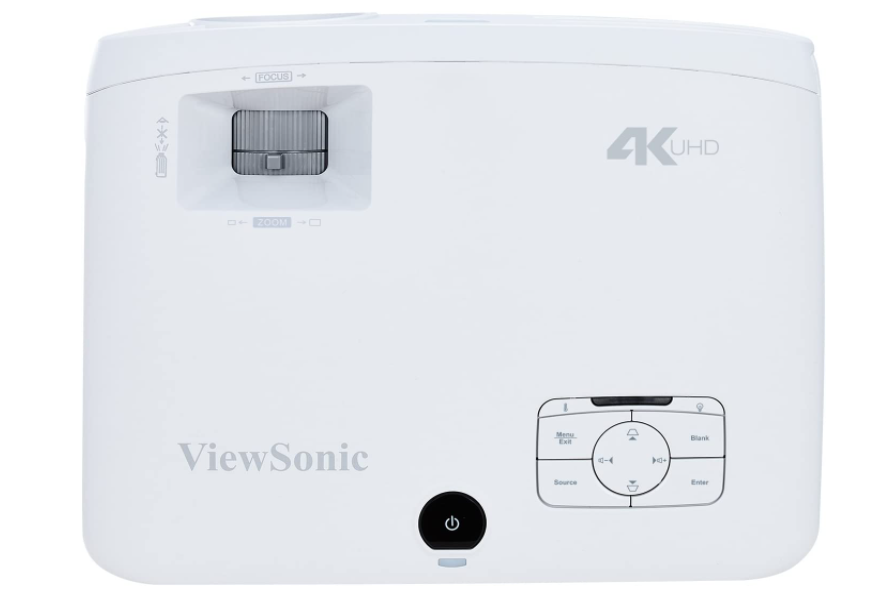
As this layout employs true pixel change as opposed to a refractor, more light is potential from a comparatively low-powered lamp. Using HDR material, you will want to make use of the brighter atmosphere, or even better, the Dynamic manner which throttles brightness as an auto-iris would. It doubles the SDR comparison and provides nearly 2500:1 with HDR. Peak luminance can shirt 400 nits.
That excess brightness comes at a small cost in color saturation. By adding a white section in the color wheel, primary colors are somewhat less vibrant. I will demonstrate just how much in the standard tests. ViewSonic PX747-4K And it ought to be noticed that the ViewSonic PX747-4K is a one-gamut screen. You won’t locate elongated shade here although ViewSonic has engineered in certain tweaks that assist pump up things for HDR content.
4K UHD / HDR Content
The chassis is all-white created from high-quality vinyl in a matte finish that will not reflect light. Two more big grills adorn both sides and efficiently handle the hot bulb without creating too much fan noise. On Regular ViewSonic PX747-4K, the fan was hardly noticeable. Some mild leaks from these types of grills and from around the lens too.
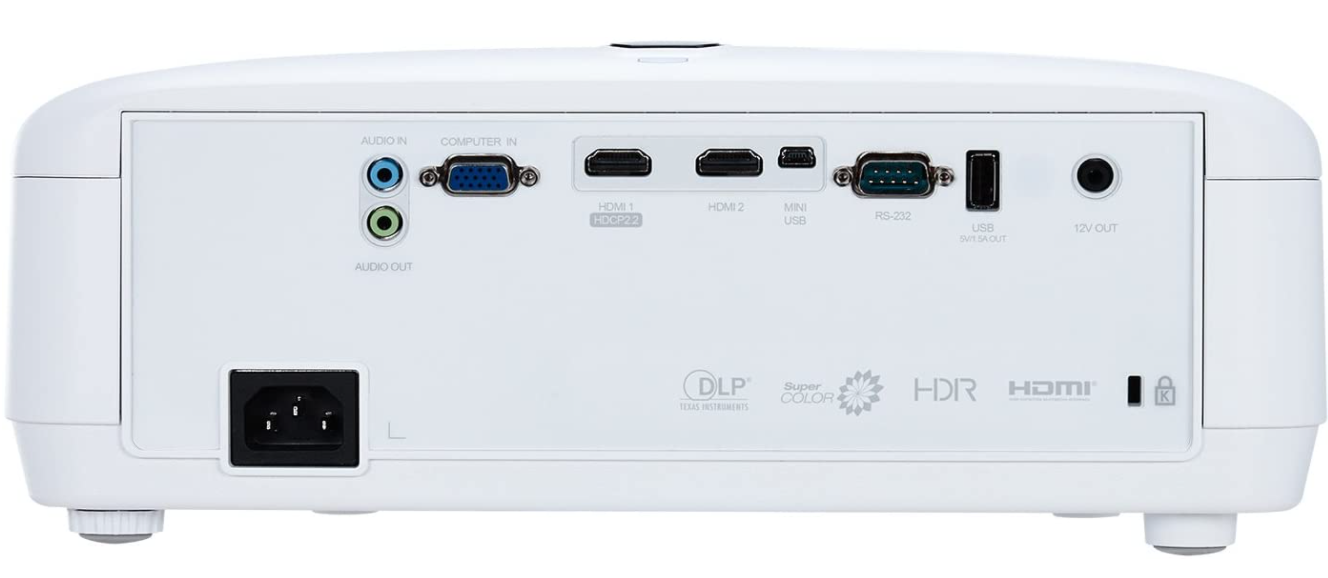
Up high, the lens controls are both guides and include rings for zoom and focus. The 2 ViewSonic PX747-4K controls socialize so you are going to need to take part in a tiny back-and-forth to come up with the sharpest image that is also sized properly. It’s possible to compensate for the keystone impact with as much as 40° of correction.
There’s not any lens change and the picture is offset 120 percent over the lens. That means it seems 10 percent of your display’s height over the projector’s standing. This is great for a normal ceiling or table mount. I used the latter and had no difficulty squaring up things in a couple of minutes. It snapped a dim glow on the ground in the front of the projector. This could be a less significant problem at a ceiling bracket configuration in which the hammock is inverted.
Full HD / SDR / 3D Content
Around the back are 3 video inputs, 1 HDMI 1.4, 1 HDMI 2.0, plus a VGA interface. Signal compatibility expands to 3840×2160 in 60Hz. There’s absolutely no framework interpolation accessible SDR or HDR style but 24p movie cadences are processed properly. The ViewSonic PX747-4K passed all my video processing evaluations except for the 2:2 pulldown which no screen can handle.
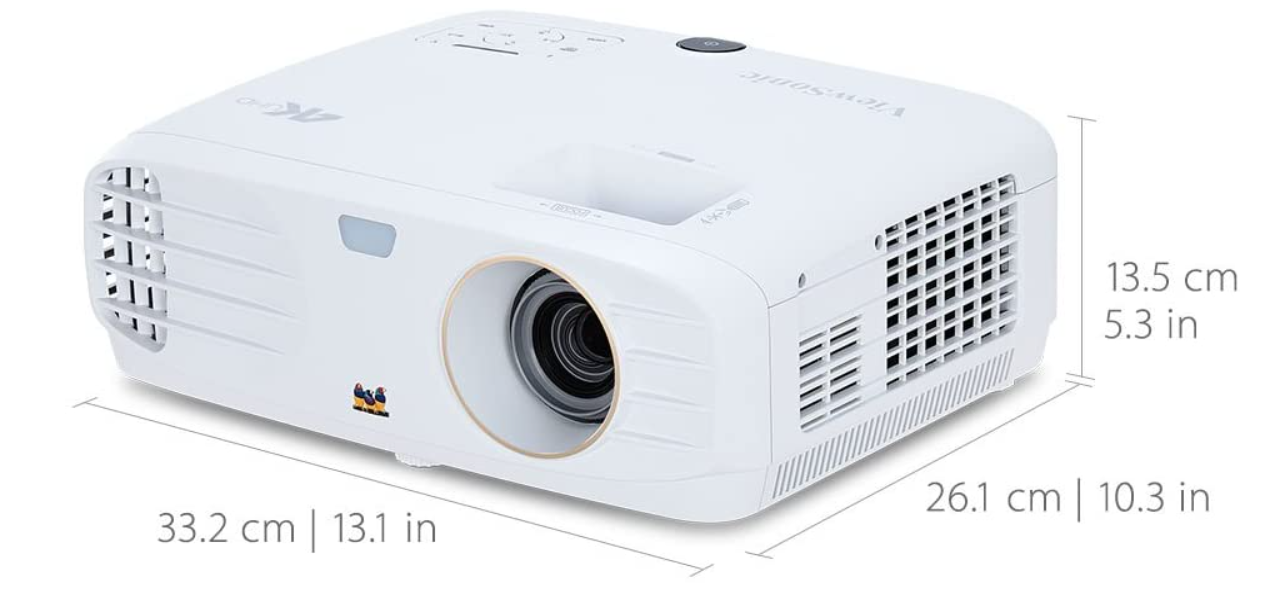
The top panel includes buttons for electricity, keystone, enter, volume, and menu navigation. However, you are going to be better served with the fantastic remote which comprises a backlight. It’s discrete keys for input and power, together with facet, test routine, display clean, and HDR style.
In the base are direct accessibility controls for brightness, contrast, color temp preset, and image style. At the center is menu navigation along with a significant information key. Though tiny, the handset is made of top quality and incredibly strong. I could stage it in any arbitrary direction and control the projector that has a sizable IR detector on front.
Color Coverage Of ViewSonic PX747-4K
The Picture menu provides three picture presets and two user memories which may be based on some of those mill styles. All could be calibrated along the consumer slots could be renamed to anything you desire. The projector will not change modes when a ViewSonic PX747-4K HDR sign is detected so it is ideal to install two calibrations, as I did, then use the buttons on the remote to change over when viewing Ultra HD content. All settings are separate for each sign type that’s a fantastic thing.
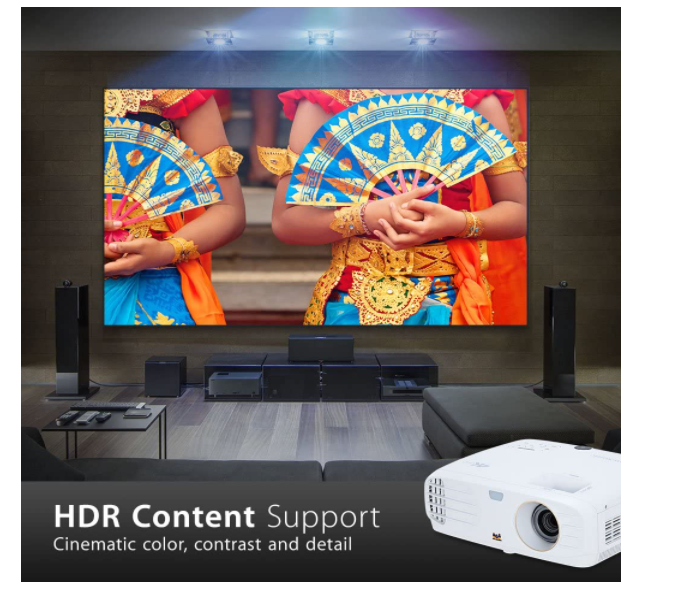
The ViewSonic PX747-4K comprises a complete color management system with color, saturation, and gain controls for all six colors. The sliders work over a massive selection and are extremely exact. Their effectiveness varies marginally. You can not increase saturation in training, upping that slider has no impact.
The gain ViewSonic PX747-4K does a good job with luminance, and color has a larger impact on secondary colors. I utilized the CMS to correct a color mistake in magenta and equilibrium luminance levels in SDR style. For HDR articles, I abandon all settings in their factory defaults.
It functions like an iris to change brightness based on articles. It doubles comparison in SDR style and raises it by over twice for HDR substance. I saw no picture pumping or other drawbacks to its usage.
Brightness / Picture Settings
From the System Setup: Advanced menu, you will get an option named ViewSonic PX747-4K HDR. Choosing it presents you with an HDR style toggle and an alternative for an EOTF degree. You will want to make sure and place you to Low. Mid and High completely ruin the effect, washing out the picture and producing a clear green cast.
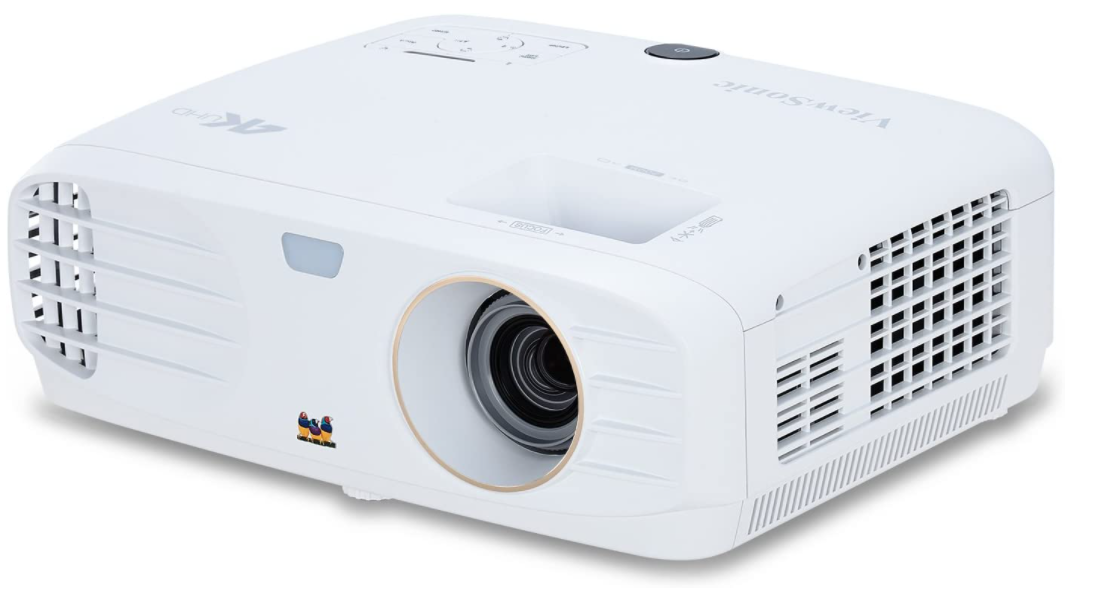
Regardless of what type of disk I put in the player, I had been mesmerized by the ViewSonic PX747-4K clarity. I have watched and quantified a lot of those Ultra HD projectors available now, for instance, uber-expensive JVC DLA-RS4500, and also are still amazed by the capacities of the budget DLPs. Do not get overly wrapped in the processor’s native 1920×1080 resolution. The ViewSonic PX747-4K pixel shift is remarkably powerful and readily creates a picture equal in sharpness to the very best native Ultra HD projectors on the market, irrespective of the cost.
So why would anybody opt for the expensive Sony or JVC screens? Contrast. There aren’t any deep blacks. Dark grey is about as black as it’s. If you’re trying to find a projector that truly projects black, DLP isn’t it. Even the best DMD screens can not render black amounts equivalent to an LCD or LCoS version.
Black Levels / Contrast
There’s something to be said for resolution and detail, however. Higher-contrast technology call for a three-chip mild engine which brings alignment problems that will always produce some amount of softness. We are talking about second differences but observable ones nonetheless. DLP’s single-chip design removes that issue.
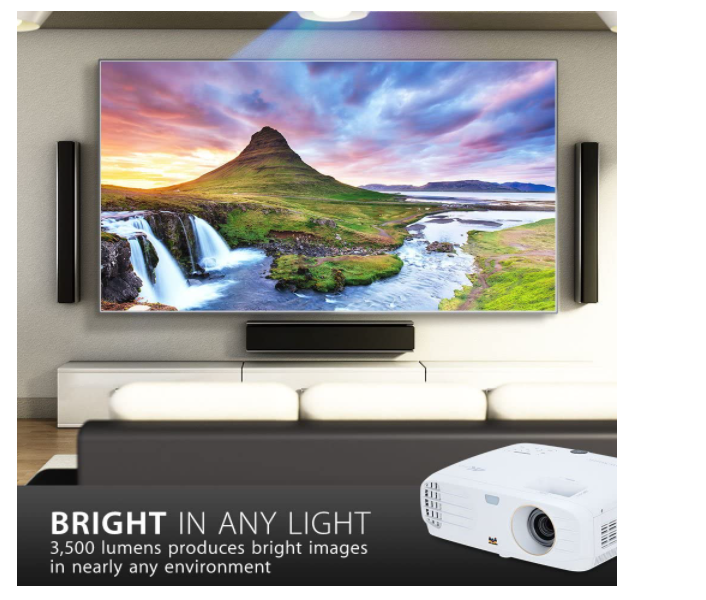
I started using The Hobbit, An Unusual Journey. If you are wondering if or not a projector such as the ViewSonic PX747-4K can make your 1080p material seem better, ViewSonic PX747-4K the solution is an emphatic yes. I saw detail from shadowy stones I hadn’t seen when viewing the film in my Anthem LTX-500. Specular highlights just jump from the display and ViewSonic PX747-4K I was nearly convinced I had been seeing a native Ultra HD disk. Fire blazed with vibrant oranges and reds while detail stayed sharp regardless of how quickly the activity became.
Next up was For The Planet Of The Apes out of 2017. The written word can not quite describe the degree of detail I found. Though there were not any true blacks, the picture thickness was large. And any issues I’ve had about an under-saturated green main went right from the window through the numerous forest scenes. Things in the foreground appeared closer than usual. The contrast might not have been in the LCoS degree, but I had been engaged as thoroughly.
Input Lag Of ViewSonic PX747-4K
I ended up my HD seeing with Black Panther. This gave me an opportunity to compare identical articles in both SDR and HDR. The hyper-digitized appearance of Wakanda’s underground labs was superbly comprehensive in SDR with a great deal of vibrant blues and smooth grey tones. There was no question in my head an Ultra HD upconversion, performed by a capable screen like the ViewSonic PX747-4K, is a noticeable improvement within great ol’ 1080p.
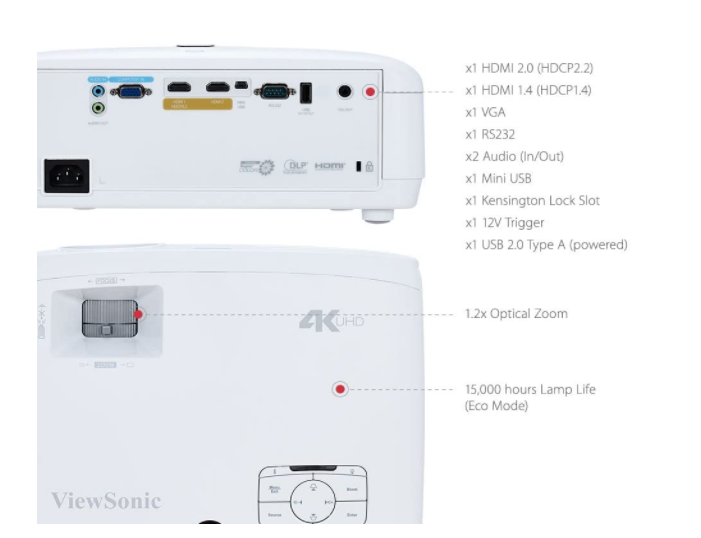
Adhering to the very same scenes from the Ultra HD edition of Black Panther, I watched much more comparison as my prior remarks about DLP were abandoned. ViewSonic PX747-4K HDR can actually make a screen with natively-low lively range seem worlds better. Seeing T’Challa from a sun-drenched background just helped bring out the nice textures in his makeup and skin much more.
While HDR will constantly look best on a luxury apartment panel, the ViewSonic PX747-4K does charge to the projector group with this functionality. I missed the excess color afforded by another Ultra HD display I have seen but I believe that just a very small flaw.
I ended my screening with World Earth II. It was hard to not see the whole show in one sitting since the incredible footage taken from the BBC completely drew me. They’ve truly produced a reference-level demonstration that will undoubtedly be gracing tradeshow booths and house theaters because of the definitive demonstration of Ultra HD HDR.
I’ve observed it in ViewSonic PX747-4K SDR in my Anthem projector and at HDR on a JVC DLA-RS640. Just that JVC can conquer what I saw in the ViewSonic. To find a picture so dripping with detail and vibrant color coming out of a $1500 projector is just nothing short of amazing.
Motion Performance
To check that the ViewSonic PX747-4K color precision, I measured out of the lens using the X-Rite i1 Pro Spectrophotometer fitted with a diffuser attachment. Luminance readings were shot using a Spectral C6 tri-stimulus colorimeter confronting a 92″ diagonal Stewart Filmscreen Luminesse using Studiotek 130 substance, profit 1.3, in a 10-foot distance. Patterns were created by means of an Accupel DVG-5000 and commanded with CalMAN, version 5.8.

It will not affect the main color considerably but regions like clouds, snow, or asphalt won’t appear very right to the eye. Gamma runs right around the 2.3 mark that matches the tag in its OSD setting. That is a question of personal taste. Some will favor the slightly darker demonstration it provides while some, myself included, ViewSonic PX747-4K will proceed for slightly more pop and select 2.2. In any event, it monitors great precision. In 7.5143dE typical, some work has to be achieved with the color temp sliders.
The benefits and offsets call for a little bit of back-and-forth to find appropriate but in the long run, I got all but the 100% measure under 3dE. They socialize marginally but the profits adjust 80% brightness while the offsets impact 30%, as any fantastic display should. I worked the comparison slider a little in hopes of decreasing that previous mistake but under placing 37, there’s absolutely no additional gain in precision. Finally, though, I am very pleased with the results.
Inputs Of ViewSonic PX747-4K
Though HDR and Ultra HD are crucial features of this ViewSonic PX747-4K, it’s a Rec.709 screen. In those constraints, ViewSonic has tried to simulate additional shade by adjusting main hues towards the exterior of the gamut triangle. Additionally, color doesn’t switch between SDR and HDR modes. The identical gamut is in drama although the points monitor differently because you’ll see from another part’s HDR tests.
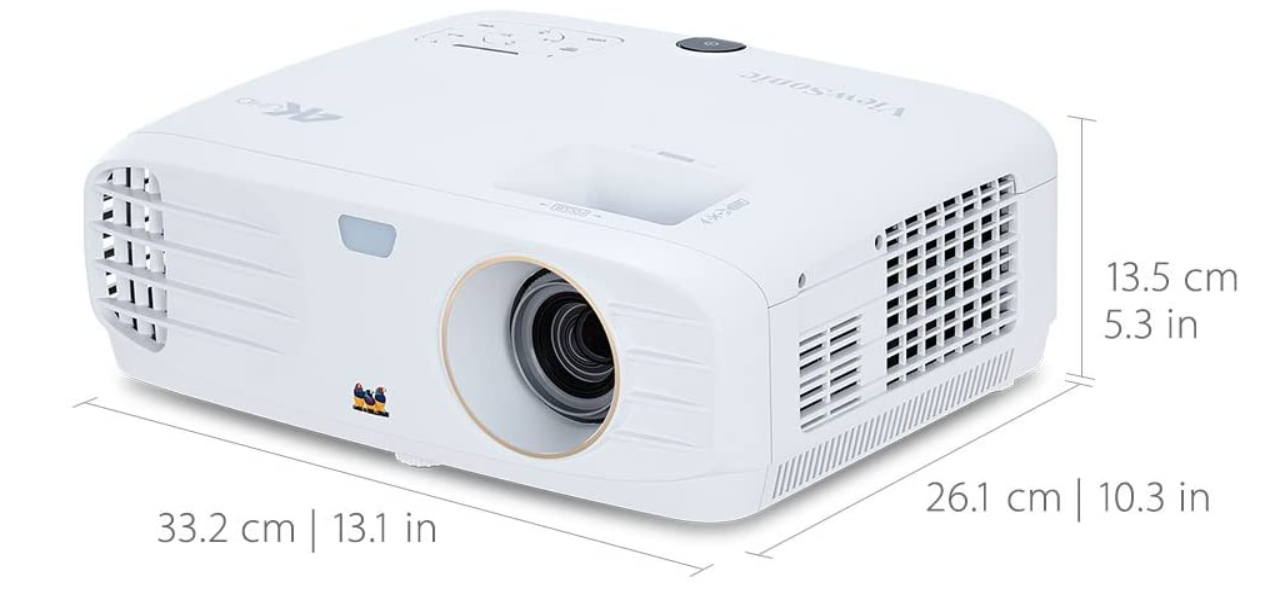
To simulate an HDR10 sign, I put an HD Fury Integral into the signal path. This system sends the suitable color and EOTF data once the origin is SDR similar to my Accupel. I used the most recent edition of CalMAN’s HDR10 workflow to create the adjustments and measurements.
I used the next User style to make distinct settings for HDR content. The ViewSonic PX747-4K will not change modes automatically as soon as an HDR sign is detected. They operate independently of the SDR counterparts With HDR getting more common, it is just simpler to use one unit of measurement. The PX747-4K is a really bright projector. Spinning on the Dynamic setting increased the summit to 209 nits using .277 nits contrast and black of 757.2:1.
OS, Apps, and Features
If you’d like maximum output, choose the Bright image style. In ViewSonic PX747-4K HDR mode, the brightness is fluid based on what is being exhibited. I quantified both window and full-field patterns and reach the greatest numbers together with the latter. I had to wait for a couple of moments for luminance to stabilize prior to measuring. This is very impressive for a 1500 projector.
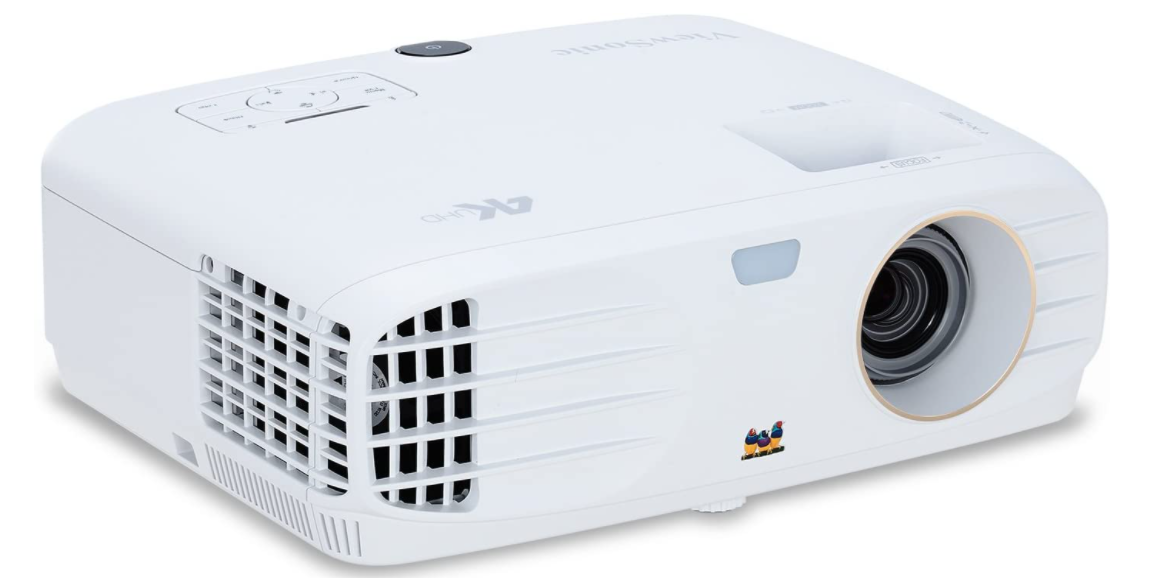
Single-chip DLP shows like the ViewSonic PX747-4K function by projecting light through a color wheel, off of a lot of miniature mirrors (typically one for each pixel), and then via the lens and on the monitor. The PX747-4K includes an RGBW color wheel which can help enhance the white light output. The processor at the Viewsonic just has 1920×1080 values of pixels mirrors and so as to acquire the total 4K resolution (or more correctly 3840×2160) each mirror jobs four pixels. It is done so fast that our brains perceive it in four-person pixels occurring in precisely the exact same moment.
You should not have any difficulty with this in a room with ambient lighting, particularly in its regular brightness setting. In that setting, you are going to receive about 4,000 hours of lamp life. There’s also a Dynamic style, which I advise using, that behaves like an auto iris and corrects the light output depending on the picture it is projecting. In any of these modes, the cooling fan noise is minimal and never distracting.
Connections and Control Of ViewSonic PX747-4K
On the surface of the projector would be the control panel switches (in case you do not need to utilize the included remote for whatever reason) as well as the zoom and focus adjustment rings. It is essential to be aware that, like most DLP projectors, the ViewSonic PX747-4K doesn’t have lens shift so you will want to be really vigilant about horizontally centering the lens into the screen.

There is a flexible foot to lift the image to the appropriate height when the projector is on a desk or stand, and also a keystone adjustment, even though use this quite sparingly since it will influence image quality. The rear of the projector includes 2 HDMI outputs, one is version 2.0 (for HDR material ) and yet another version 1.4. There is also a heritage VGA interface, 3.5millimeter audio out and in, a mini-USB to get firmware upgrades, an RS-232 controller interface, along with a USB out.
The button placement is great, you will find an ample variety of fast-access buttons for changing input signal or correcting menu choices. On is reddish, while Off is green (it is indicated this way in the guide too ), making no sense. There were many times I pressed the incorrect button according to its color before I inserted the on/off responsibilities to my house automation. For testing shade, I used a Photo Research PR-650, and to quantify light output I utilized the Konica Minolta LS-100 luminance meter.
Out of the Box Measurements
Before we reach the projector let us discuss Rec. ‘s. Rec. 709 might be the high heeled standard that was initially published in 1990. Color space denotes the variety of colors a screen can reproduce. A Rec. 709 color space is smaller (or encircles fewer colors) compared to a Rec. Much like Rec. 2020 covers more criteria than simply color distance.
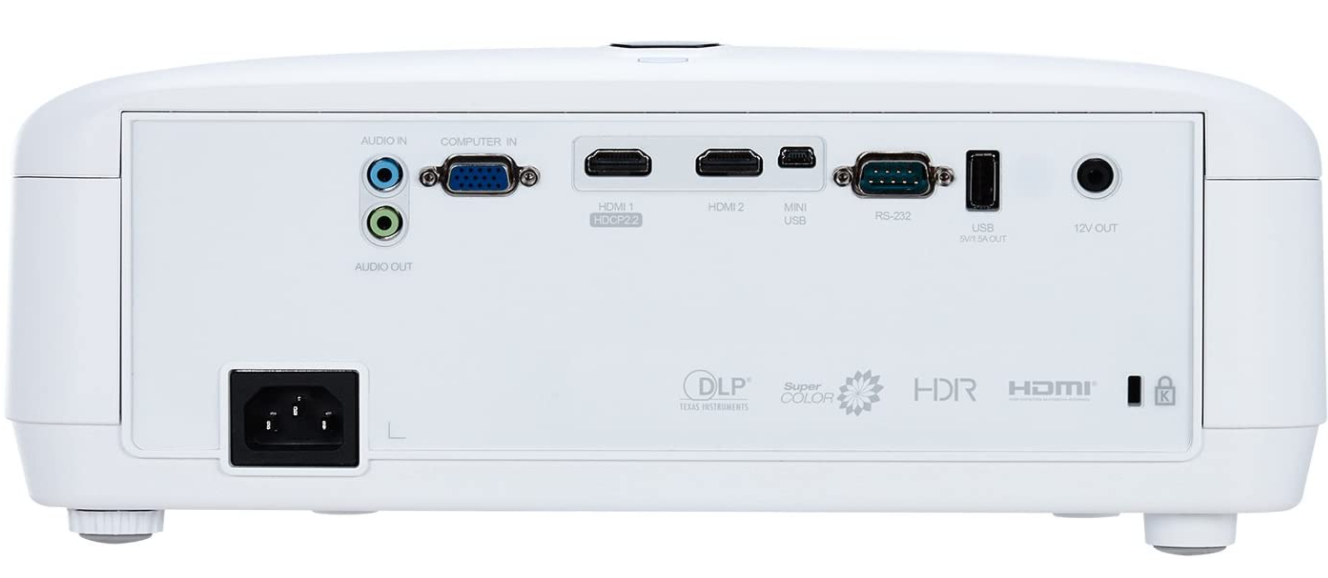
709 color space projector rather than the Rec. 2020 and WCG which I’m utilized to seeing attached to UHD screens, so colors will naturally be limited Of the Bright, Standard, and Film picture modes I used the Film picture style since it seems most precise, which was backed up from the color point dimensions.
Each of the color points is off a bit, but for the most part, I really could just visually detect it from the green and cyan in which I did not observe the thickness of saturation I anticipated. This bluish ViewSonic PX747-4K tinge can be understood from the whites at the area shuttle and clouds to the NASA footage substance from the DVE disk, which includes a choice of test images used to check color accuracy.
There’s the chance of fine-tuning the color precision in the menu in case you’ve got the capacity, or cash, to calibrate the projector. This is a time-consuming procedure and you are going to require a meter such as the PR-650, examine patterns of all of the color factors, and a few calibration programs.
Final Thoughts
I really could feel the chilly Lara Croft was undergoing while researching Siberia and preventing members of The Order of Trinity. The snow had this somewhat blue tinge I saw at the shuttle, but viewing a massive bear come in the 4K on a 100-inch display is terrifying. I knew it was coming and it managed to cause my heart to race, in addition, to throw my focus and overlook out the dodge button. I didn’t feel like the excess lag in the projector influenced my gameplay.
I played somewhat as another favorite heroine of mine once I began Horizon Zero Dawn, but this time I had been in 1080p in my non-pro PS4. In spite of the lesser resolution that the projector looked fantastic. I am constantly impressed with the visuals and universe construction every time that I return to the match and also the Viewsonic only reinforces this miracle. During daytime moments the less than stellar comparison of this ViewSonic PX747-4K did not disturb me, even though I could detect it when night fell.
There were two minutes a couple of days apart whenever the projector flashed complete display during the principal colors before coming back into the series I was viewing (after on DirecTV and after with Netflix). The final ViewSonic PX747-4K one is that the beep that occurs if you turn the projector off. It catches me off guard and startles me every moment, particularly whenever the projector is completed down, and there is no way to turn off the beep, obviously.

